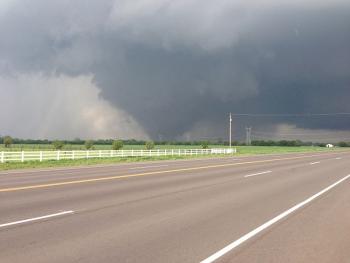Earth's Atmosphere
The atmosphere is a mixture of nitrogen (78%), oxygen (21%), and other gases (1%) that surrounds Earth. High above the planet, the atmosphere becomes thinner until it gradually reaches space. It is divided into five layers. Most of the weather and clouds are found in the first layer.
The atmosphere is an important part of what makes Earth livable. It blocks some of the Sun's dangerous rays from reaching Earth. It traps heat, making Earth a comfortable temperature. And the oxygen within our atmosphere is essential for life.
Over the past century, greenhouse gases and other air pollutants released into the atmosphere have been causing big changes like global warming, ozone holes, and acid rain.






Please log in
Science Blogs
Real Climate: climate science from climate scientists

Windows to the Universe, a project of the National Earth Science Teachers Association, is sponsored in part is sponsored in part through grants from federal agencies (NASA and NOAA), and partnerships with affiliated organizations, including the American Geophysical Union, the Howard Hughes Medical Institute, the Earth System Information Partnership, the American Meteorological Society, the National Center for Science Education, and TERC. The American Geophysical Union and the American Geosciences Institute are Windows to the Universe Founding Partners. NESTA welcomes new Institutional Affiliates in support of our ongoing programs, as well as collaborations on new projects. Contact NESTA for more information.






